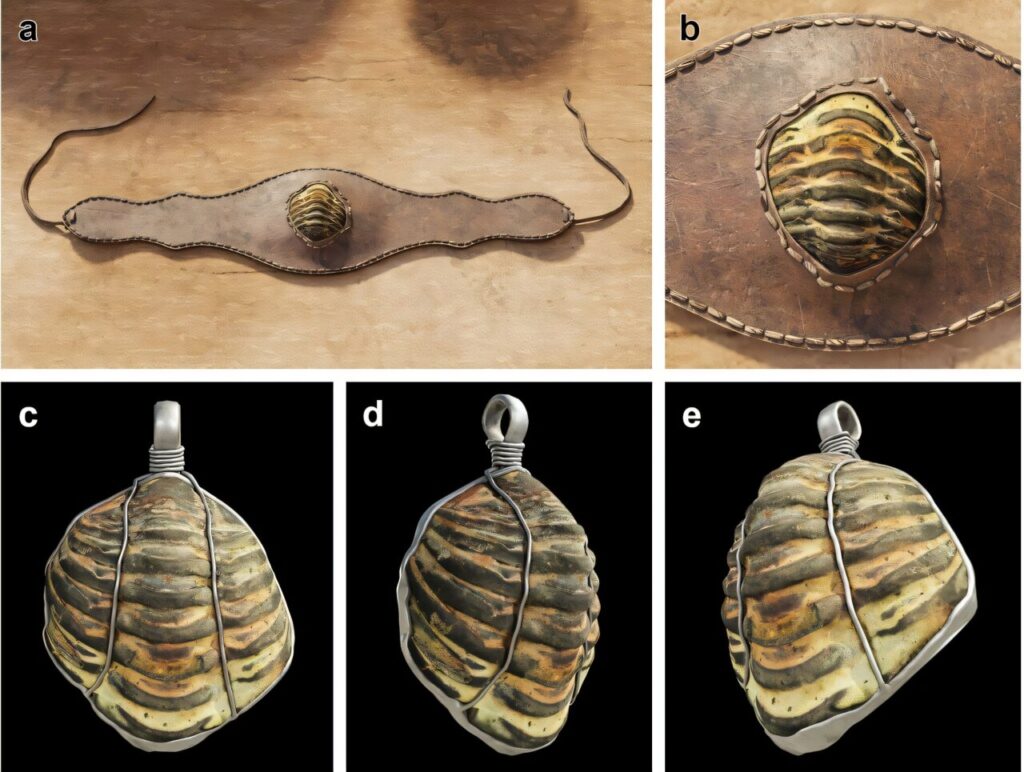
At the Roman settlement of A Cibdá de Armea in northwestern Spain, archaeologists have uncovered intriguing evidence suggesting that ancient Romans may have adorned their amulets with fossils of extinct marine arthropods, such as trilobites. This practice was possibly rooted in the belief that these specimens carried magical or protective powers.
The discovery, dated to between the 1st and 3rd centuries CE, includes a trilobite fossil that holds several remarkable distinctions. It is the first ever confirmed from Roman times, one of only three known worldwide to have been deliberately collected and used by humans over a thousand years ago, and the eleventh trilobite ever found in an archaeological context. The study, published in the Archaeological and Anthropological Sciences journal, reported that the fossil showed clear signs of intentional modifications, suggesting it was worn as a pendant or bracelet.
Historical Context and Significance
The trilobite fossil, identified as Colpocoryphe sp., was found to have unique taphonomic markers—clues that reveal how and where it was preserved over time. Researchers discovered the fossil preserved as a natural cast mineralized with iron oxide, giving it a distinctive reddish hue. This evidence of deep weathering is similar to that seen in specimens from the southern Central Iberian Zone, located approximately 430 kilometers from the discovery site. This considerable distance suggests intentional transport by the ancient Romans.
Interestingly, the trilobite was unearthed in the same archaeological layer as a bronze coin of Emperor Augustus. This aligns with historical accounts describing Augustus’s fascination with fossils during the Roman era. According to the historian Suetonius, Augustus was an avid collector who not only imported fossils from Greece but also personally excavated them on the island of Capri. He is credited with creating one of the first known paleontological museums at his villa, where he displayed the bones of ancient giants and monsters, which we now recognize as fossils.
Scientific Analysis and Findings
The researchers identified the trilobite based on its segmented exoskeleton, two longitudinal furrows, two smooth pleural fields (chest lobes) on either side of the tail section, and the proportional width of the rachis—the central lobe running down the middle of the body. Although no holes or perforations were found in the fossil, which would have been required to turn it into a personal ornament, researchers hypothesize that the trilobite could still have been worn as jewelry, possibly set using a crimp or embedded in metal like gold or silver.
Microscopic examination and high-contrast photographs of the fossil revealed human-made modifications, such as seven artificial facets on the left and underside of the specimen. These were likely created to flatten the fossil for use within a pendant or bracelet. This study demonstrates how a single artifact, unearthed from the past, can act as a window into the lives and beliefs of ancient civilizations.
Implications and Future Research
This discovery not only sheds light on the cultural practices of ancient Romans but also opens new avenues for understanding the intersection of natural history and human culture. The use of fossils as amulets suggests a sophisticated level of interaction with the natural world, where objects were not merely decorative but imbued with symbolic meaning.
Future research may focus on uncovering more instances of fossil use in ancient cultures, which could provide further insights into how early civilizations perceived and interacted with their environment. Such studies could also explore the broader implications of these practices on our understanding of ancient belief systems and their influence on modern cultural traditions.
Written by Sanjukta Mondal, edited by Sadie Harley, and fact-checked by Robert Egan, this article is the result of careful human work. We rely on readers like you to keep independent science journalism alive. If this reporting matters to you, please consider a donation. You’ll get an ad-free account as a thank-you.
More information: Adolfo Fernández-Fernández et al, Significance of fossils in Roman times: the first trilobite find in an early Empire context, Archaeological and Anthropological Sciences (2025). DOI: 10.1007/s12520-025-02266-8







